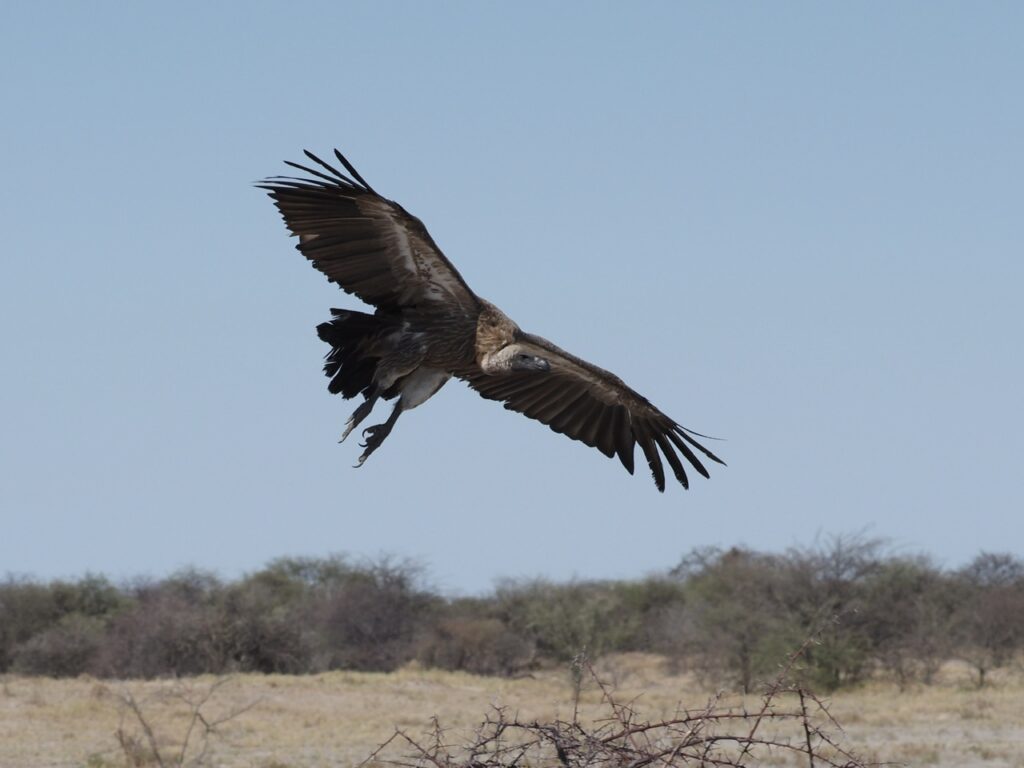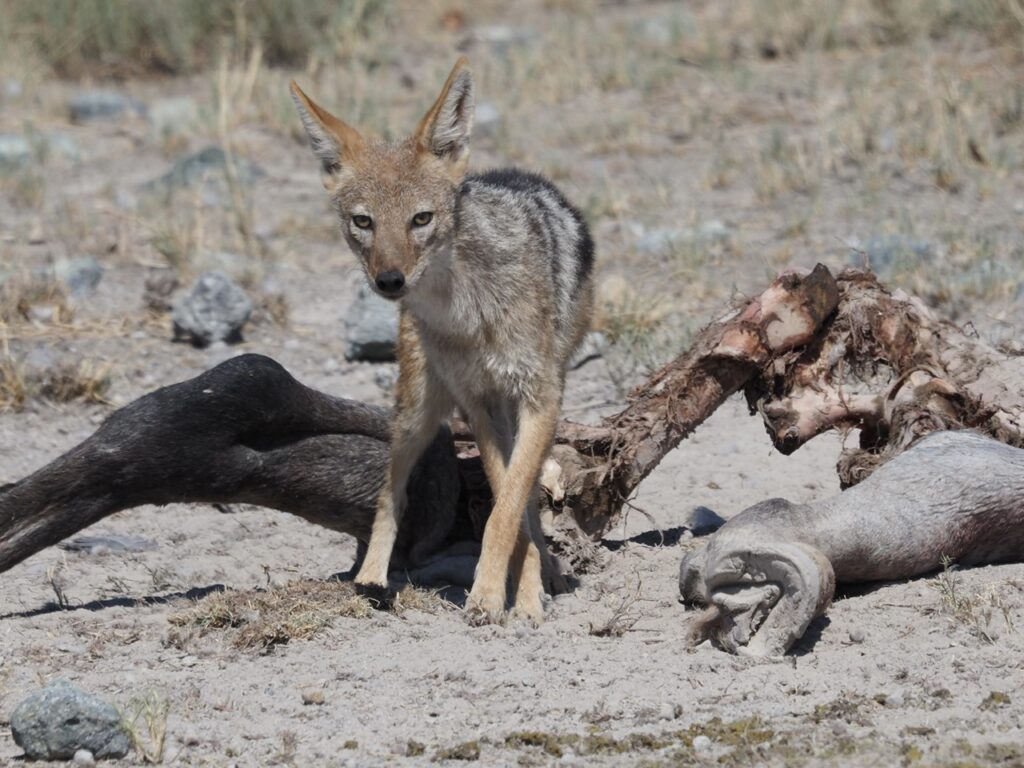The journey here was pretty straightforward, although long. An 11 hour flight from London to Johannesburg, 3.5 hour layover, 1.5 hour flight to Maun and then a 45 minute light aircraft to Jack’s Airstrip in Makgadikgadi. We are travelling light with just hand luggage so it’s all pretty easy. Nobody else is flying to our camp so it is just Paul and I in a tiny 4 seater plane. I get to sit in the co-pilot seat. Cool!

Unusually Jack’s Airstrip has a little reception tent where we are offered snacks and lemonade before the 15 minute drive to the camp. It also has surprisingly good toilet facilities. Generally these remoter airstrips just have a bush!



We are staying at Camp Kalahari for the next three nights. We are offered more food and shown to our tent for a brief freshen up before an afternoon game drive. We travel no more than a few hundred yards when we encounter a huge male lion with two lionesses. They have full stomachs and are lazing in the shade, as is the norm in the daytime heat.



The male has a broken lower tooth which cannot improve his temperament.

He is very interested in one of the females and is clearly looking to mate with her. She makes it very clear that she is not interested.
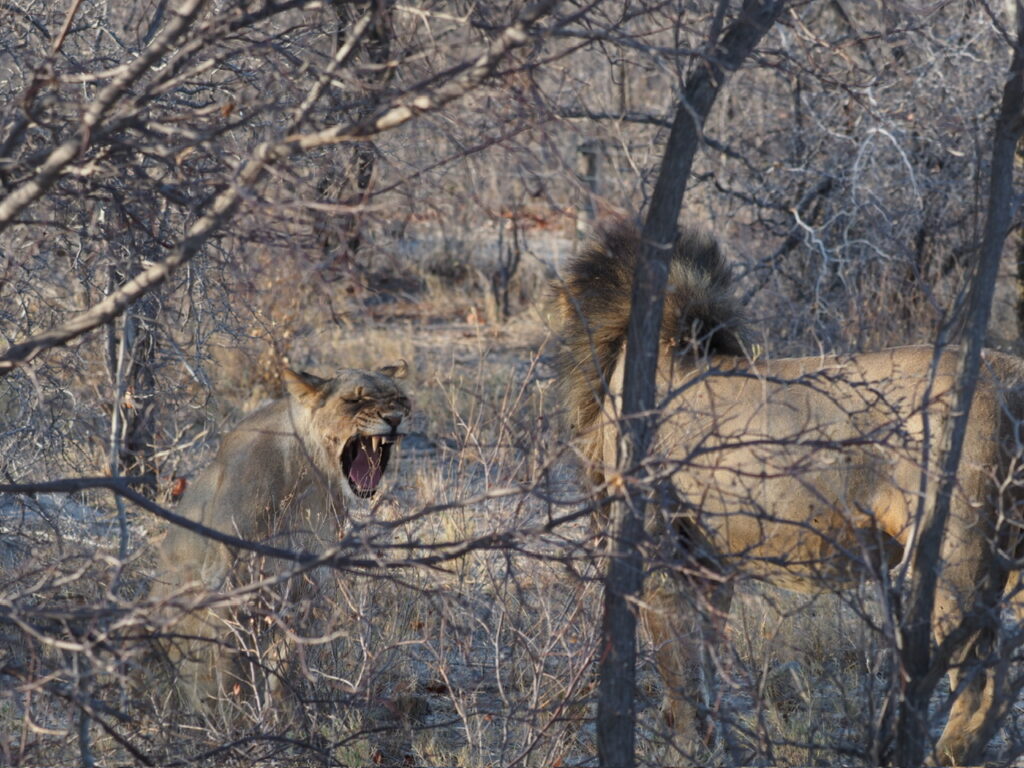
We leave the lions and drive towards the salt pan where the zebras and wildebeests are plodding in single file in the hunt for water and any uneaten vegetation. This is just the start of the zebra migration, which is one of the largest mammal migrations involving 20000-30000 zebras and similar numbers of wildebeest. The wind starts to pick up. Initially visibility is not too bad …

… but by the time we arrive at the salt pan dust is flying everywhere making it hard to see and breathe and keep your hat on! However it does make for some interesting and enigmatic photographic opportunities.



Despite the challenges of the weather we are delighted to be driven to a small rise to see sundowners have been setup. We decide to brave the elements in the interest of not appearing rude!
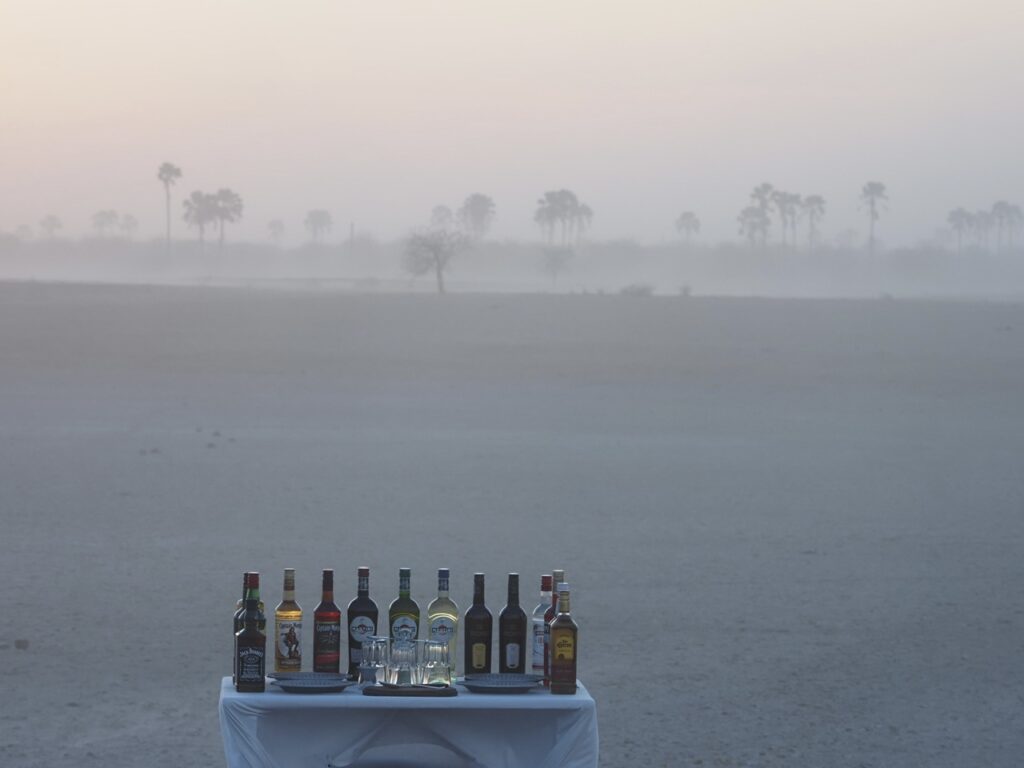
We return to camp for supper and then an early night after our long travel day. However sleeping is a challenge. The wind is howling and everything on our tent rattles and clangs. The tarpaulin flaps noisily, but far worse are metal poles that bang loudly every time you are dozing off. Having finally gained a little sleep I am woken by the lions roaring in the distance. Surprising I can hear them over the din of the tent!
We are woken at 05.00 with tea, biscuits and orange juice. The wind has dropped, it is slightly overcast and the air is cool. I am very excited because we are going to visit meerkats this morning.

This particular mob has been habituated to humans and is where the film-makers come. As with all wildlife there are no guarantees and sometimes the animals just don’t want to co-operate. But not today. Boy are we in for a treat. We drive to meet our guide and spend two glorious hours in the company of these little guys.





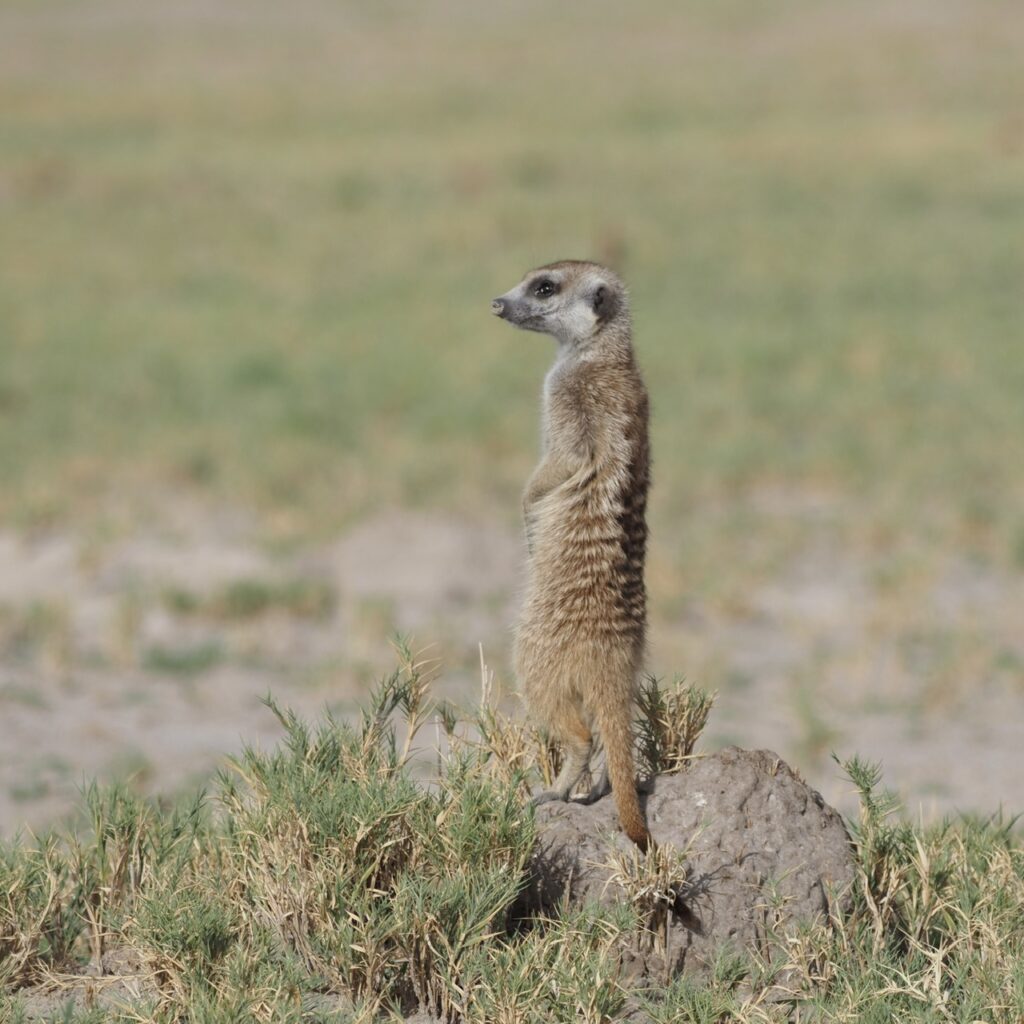

Meerkats use humans as viewing platforms. Our guide sat down and immediately a meerkat climbed on his shoulder. Paul sat next to him but made sure he was higher, I then did likewise and the meerkat moved between us all. Its fur tickled my nose. It was so clean and fluffy and heavier than I expected, resulting in the meerkat almost pulling my hat off as it clambered up.

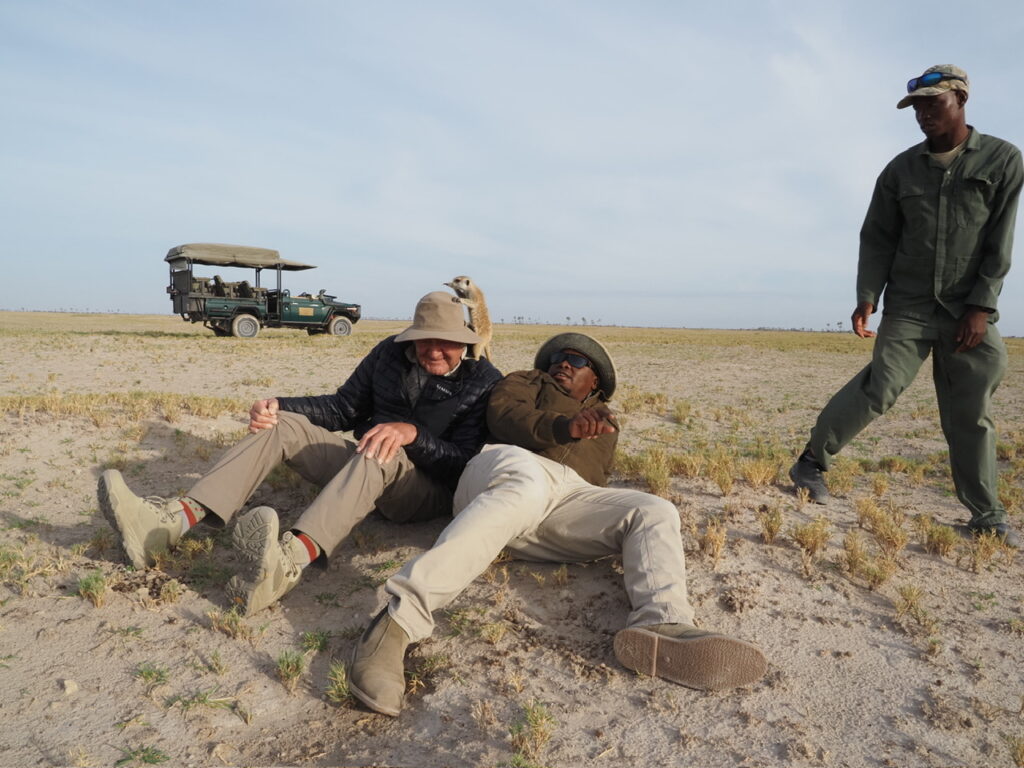
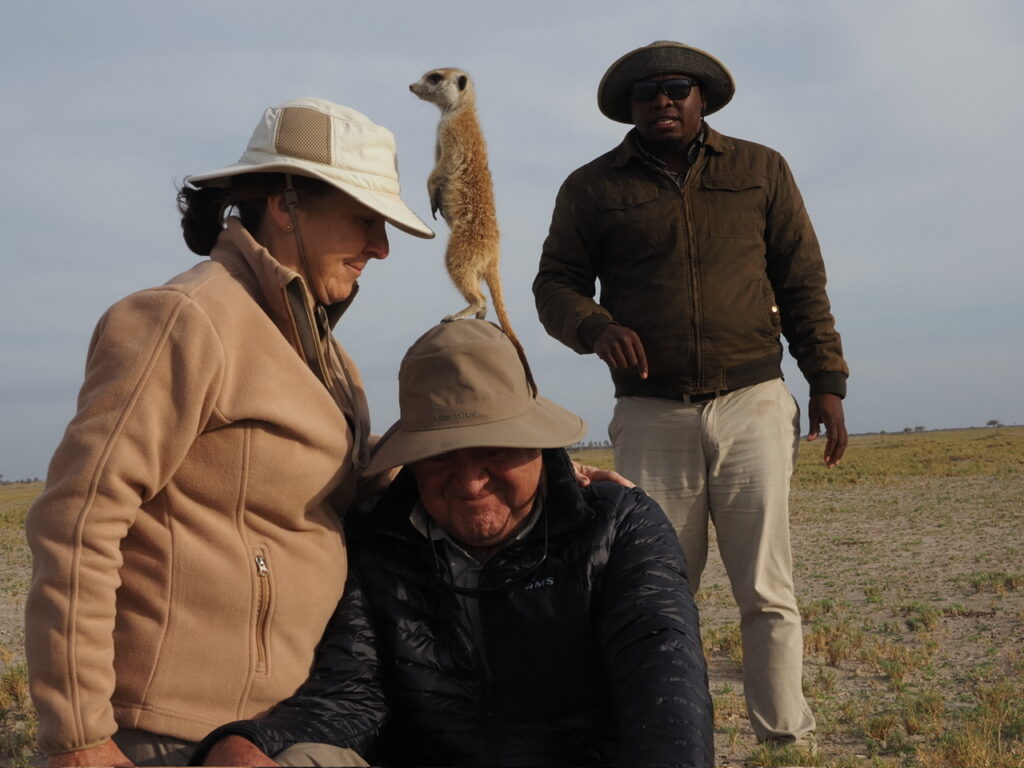

We follow the meerkats on their morning forage for grubs and scorpions. I lie on the ground to try and capture eye level shots and instantly a meerkat climbs on my leg, runs up my back annd onto my shoulder. This is truly the most incredible and privileged experience!

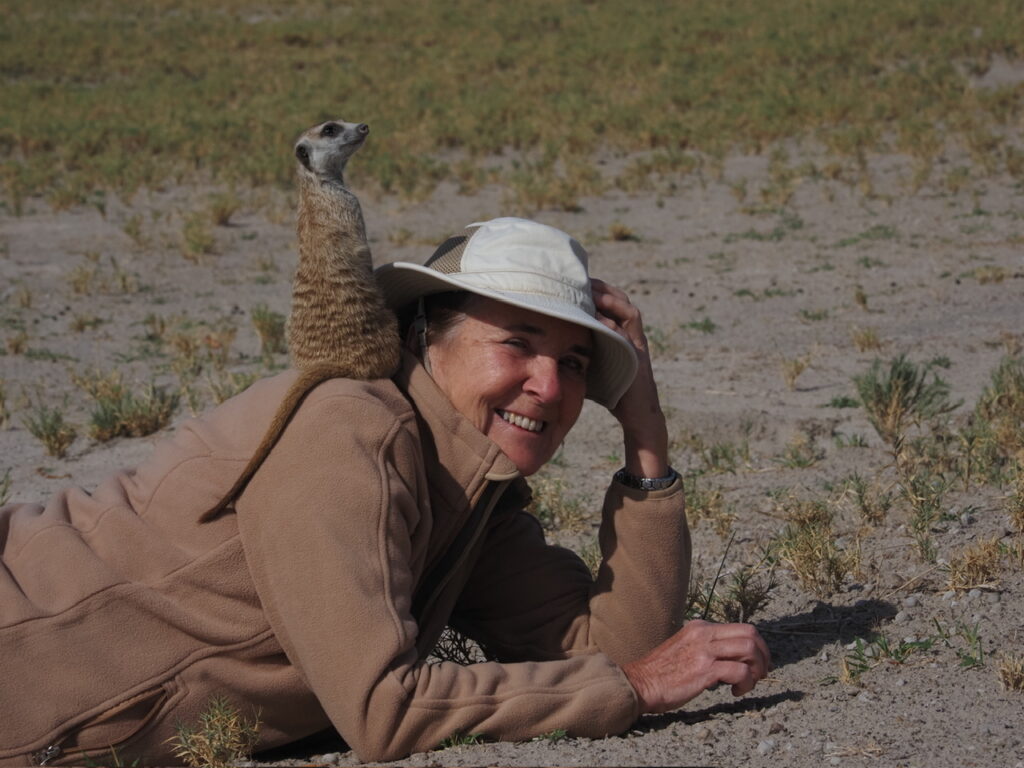
The whole day is amazing. A veritable feast of animal encounters…..


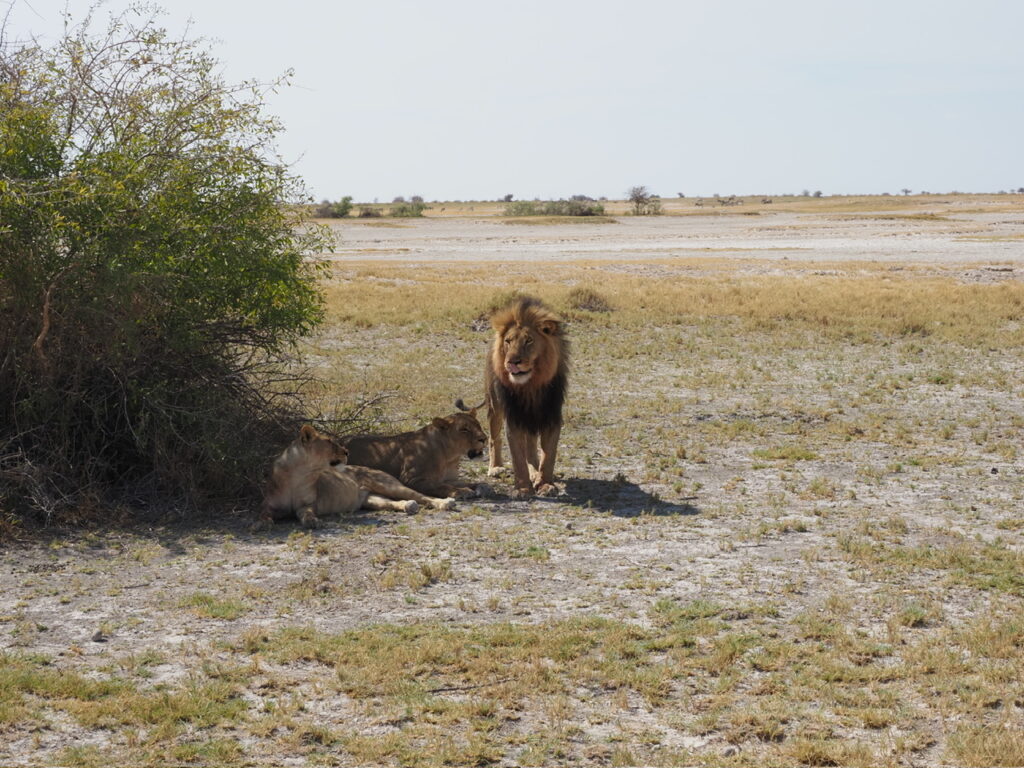




So much life here in the desert!







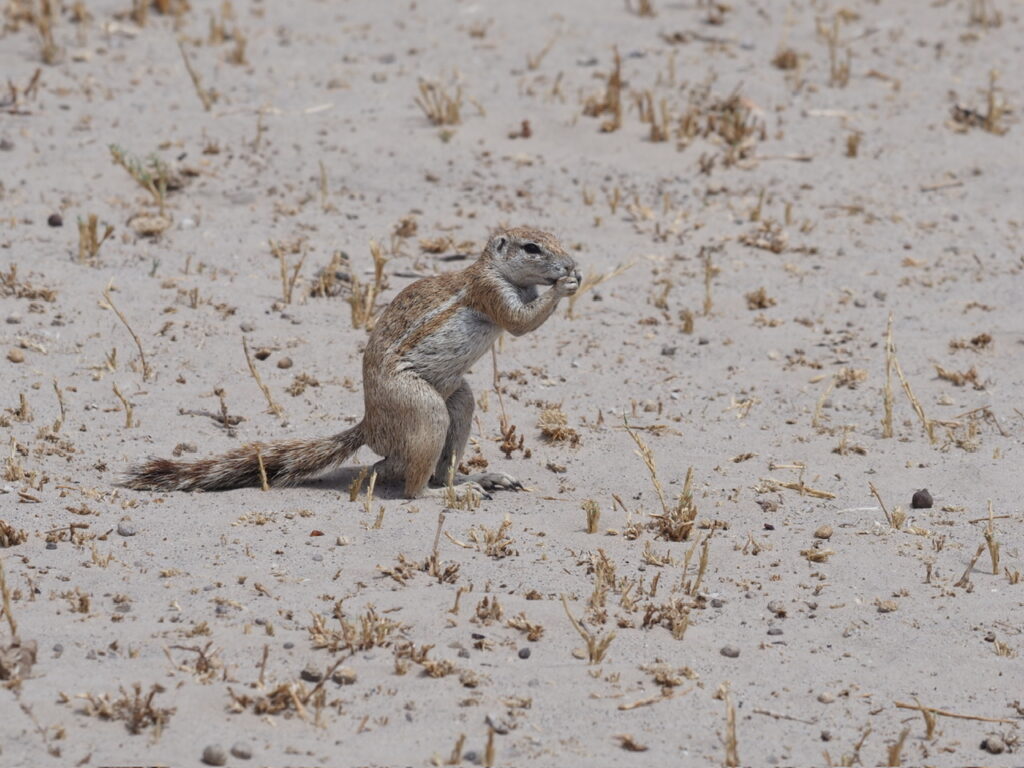
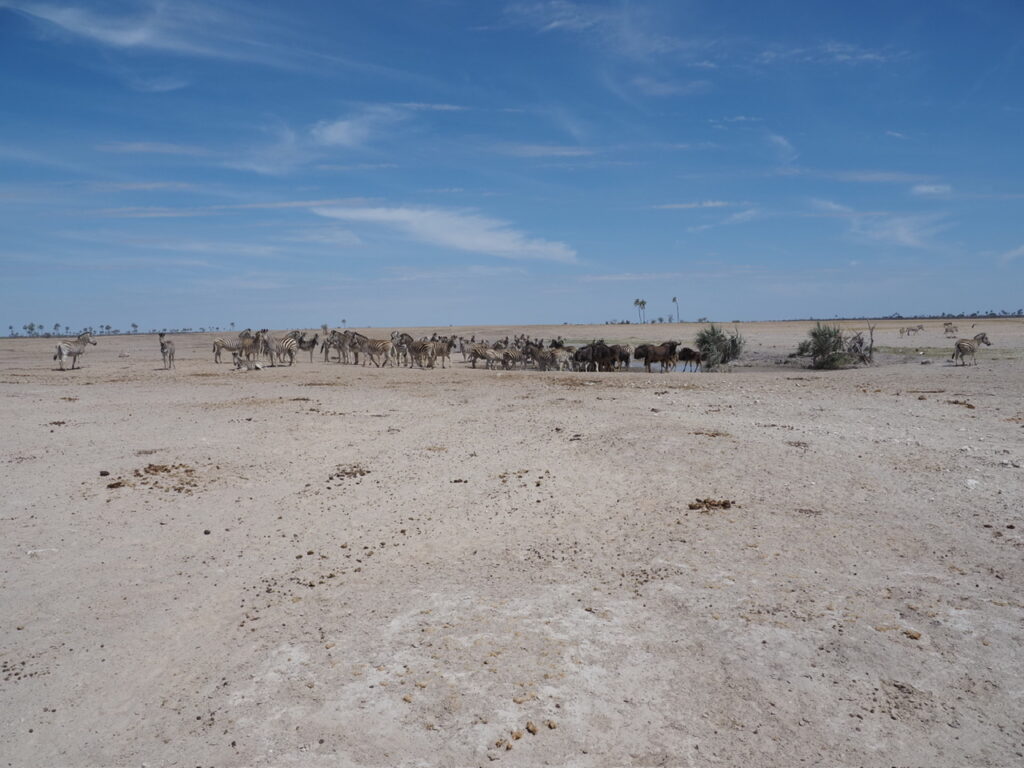
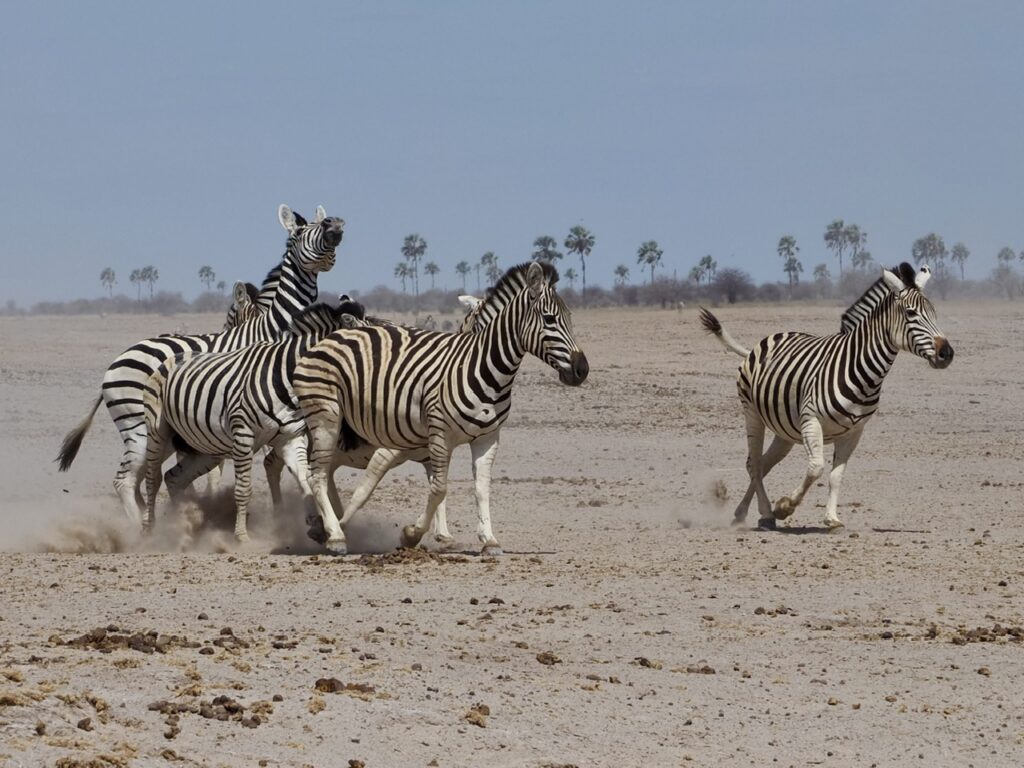

Our day finishes with a walk with the San Bushmen to learn about some of their survival skills.

It was very interesting. They tells us they burn elephant dung, crush the ash and use it to cure aches and pains. It makes sense. The elephants eat all types of plants and many have curative powers.
We learn how they dig up huge tubers to extract water. They scrape the flesh, roll it and squeeze the water into their mouths. Afterwards they replant the unused part which seals itself with latex and regrows.
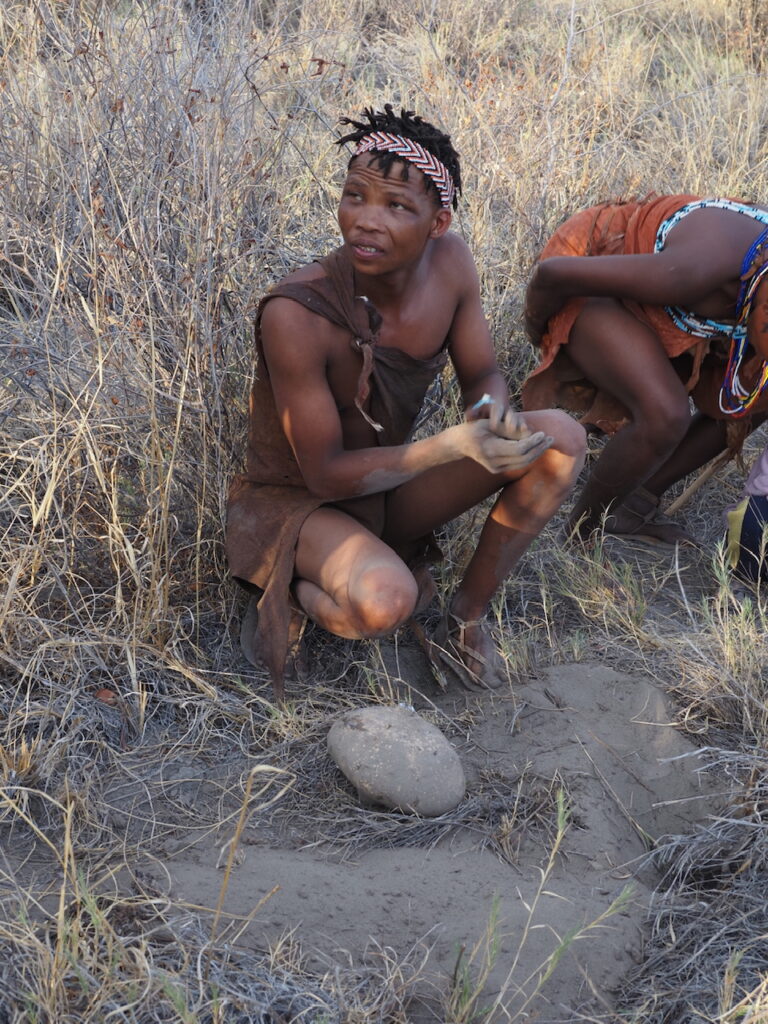



They show us how to make a snare for catching guinea fowl…
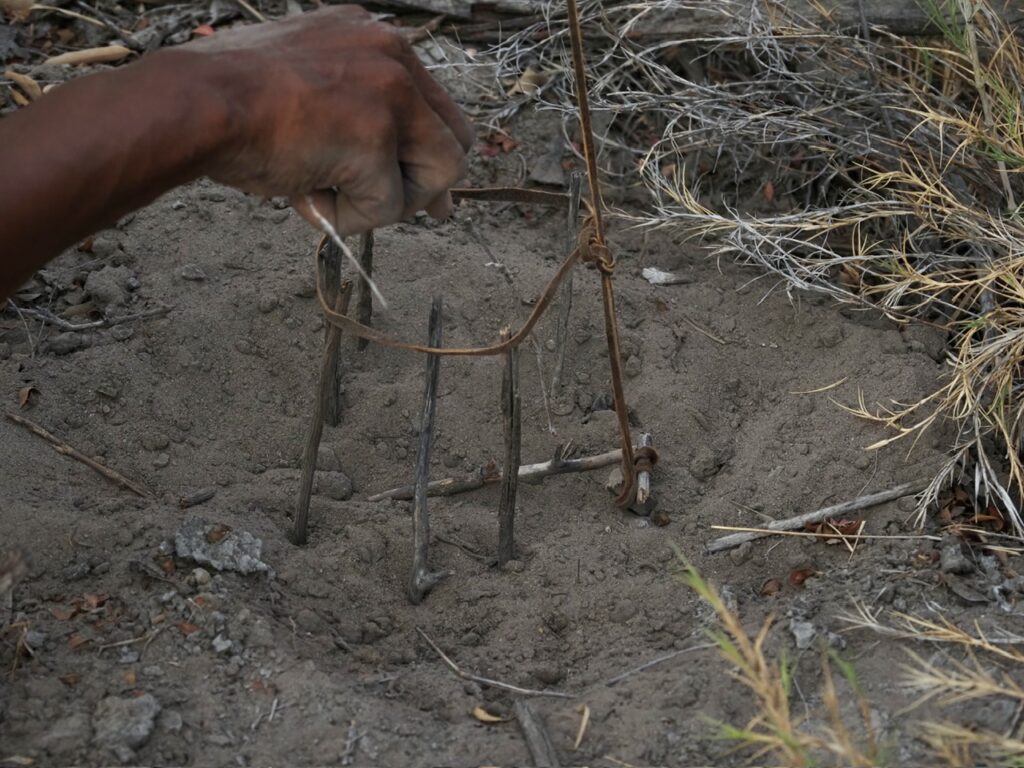
…and how to make fire

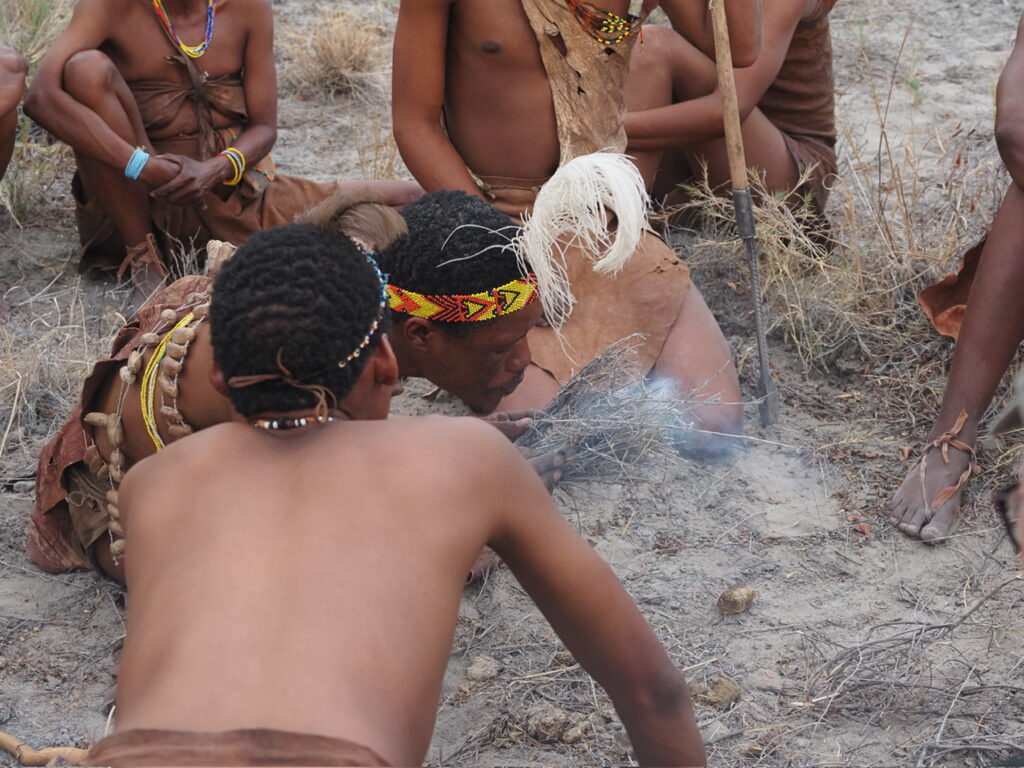

They then play a game a bit like rock/paper/scissors except it is incredibly fast and causes great hilarity amongst them. They are wonderfully warm and hospitable people and I hope that they can continue to live their ancient lifestyle for years to come in our modern world. Then it is time for supper and bed.

We’re up at 05.00 for another astonishing day. The migration herds are really increasing in numbers. On our way to stake out the waterhole we see a southern black korhaan, a bat-eared fox, warthogs, a yellow mongoose, lots of helmeted guinea fowl and white backed vultures to name but a few.

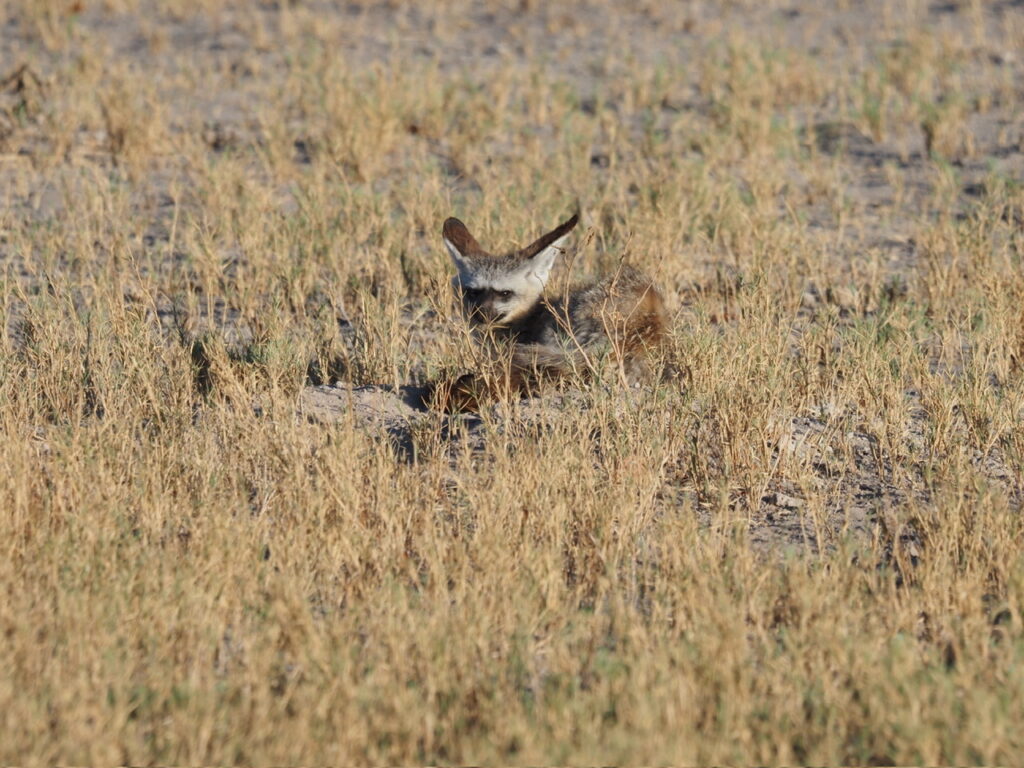

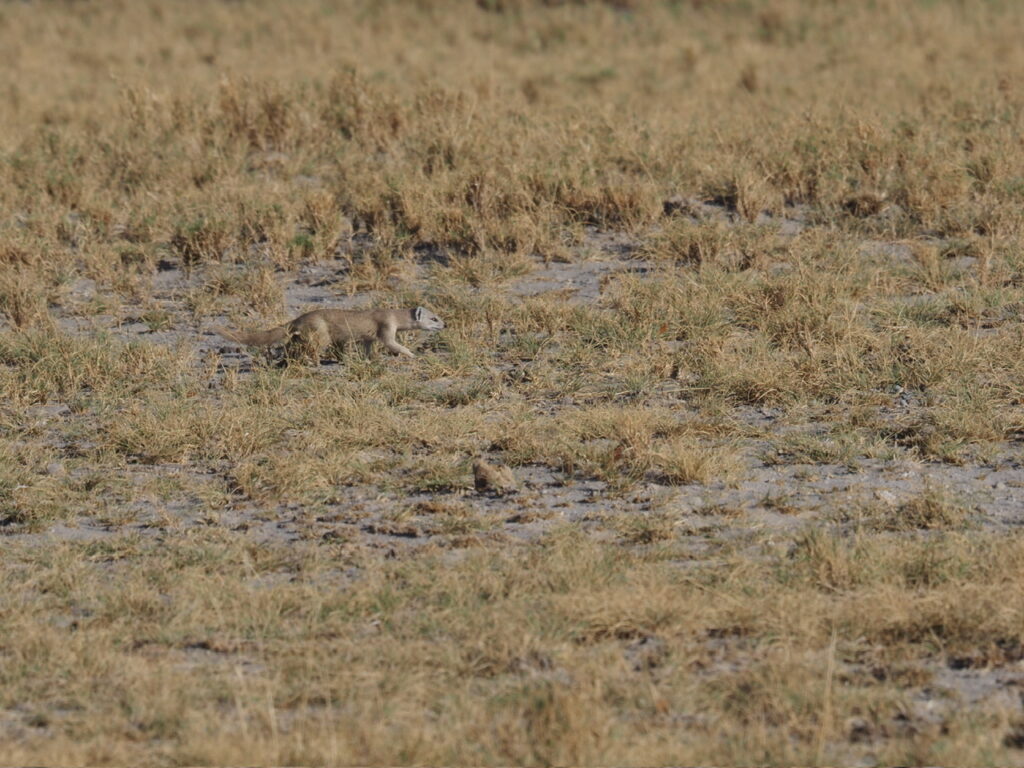
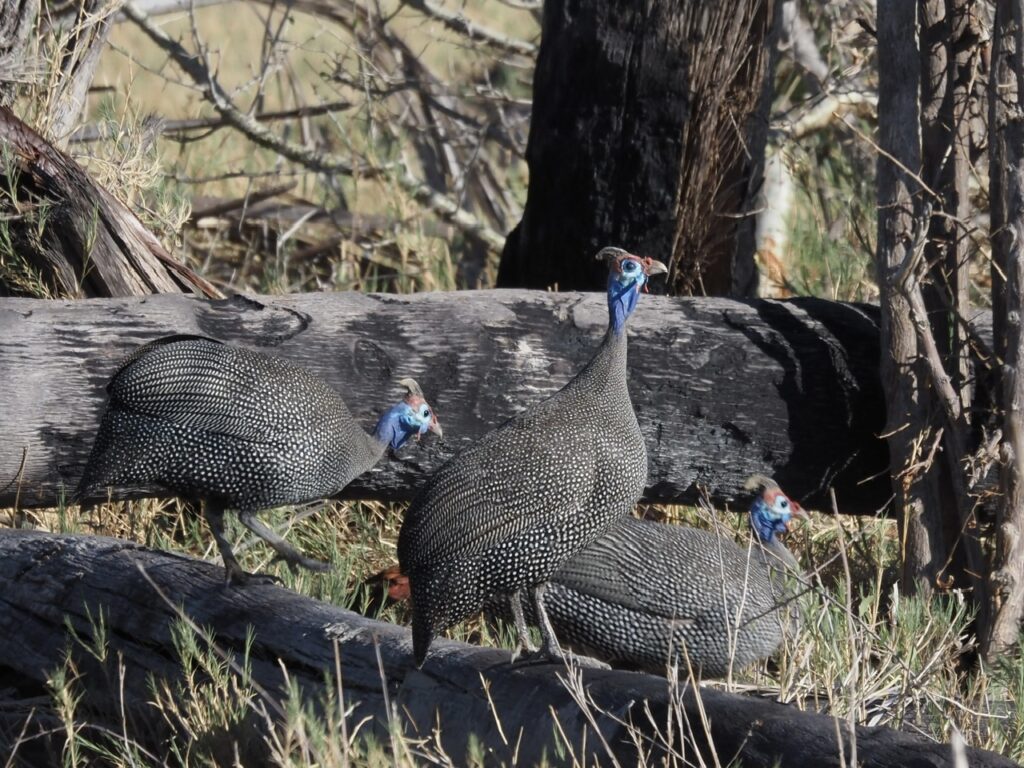

At the waterhole the zebras are being pretty aggressive.

There are a lot of animals and not much water. We eat breakfast whilst watching the animal interaction.


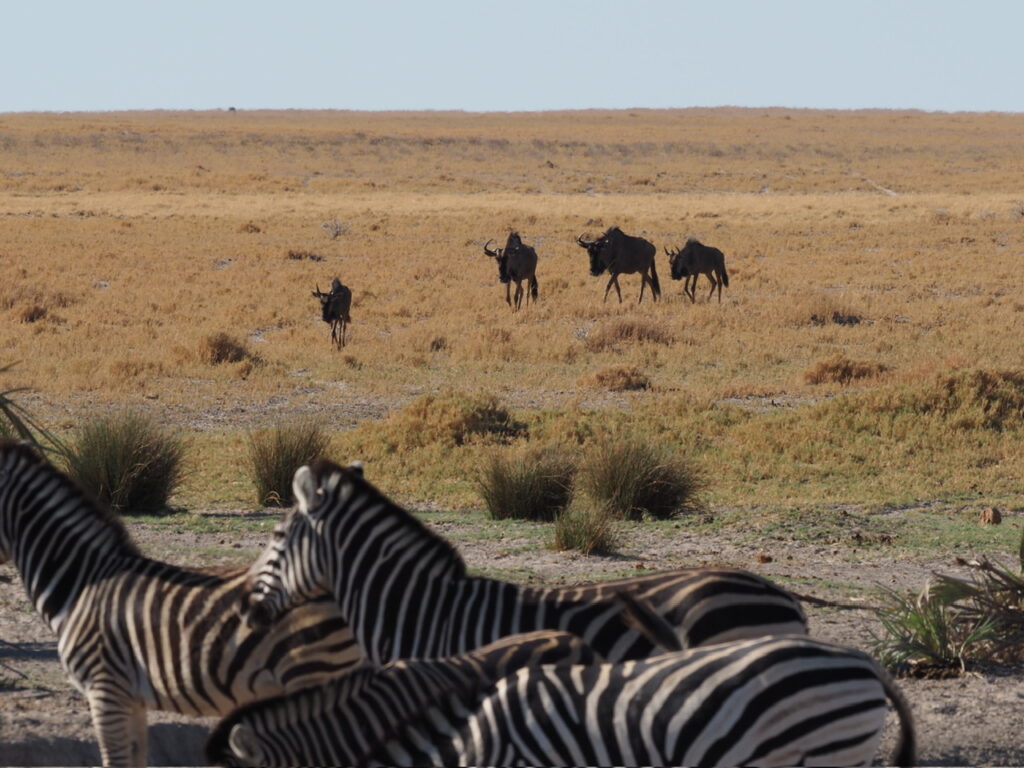
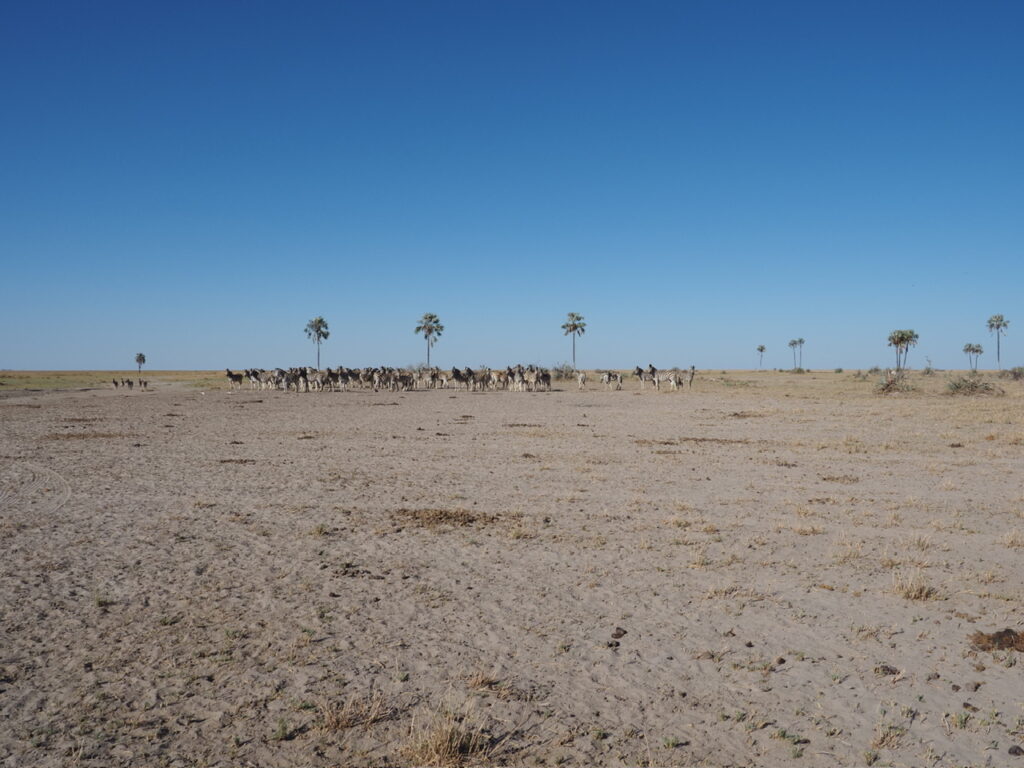
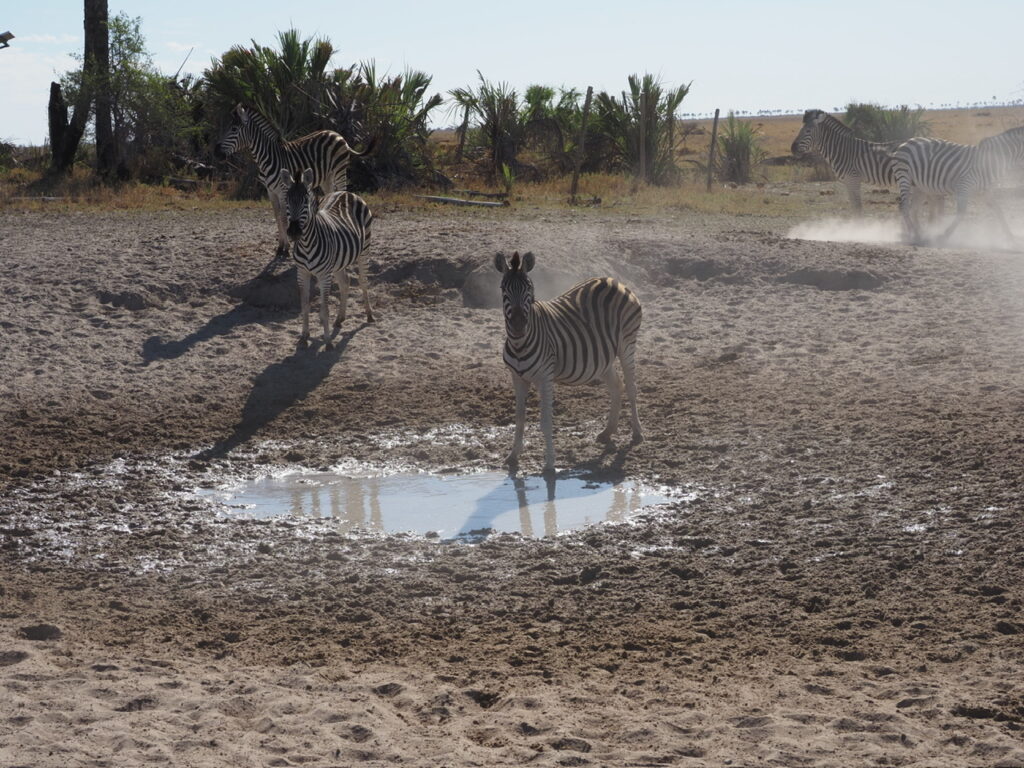
The morning keeps giving with wonderful vistas that the camera does not do justice to…
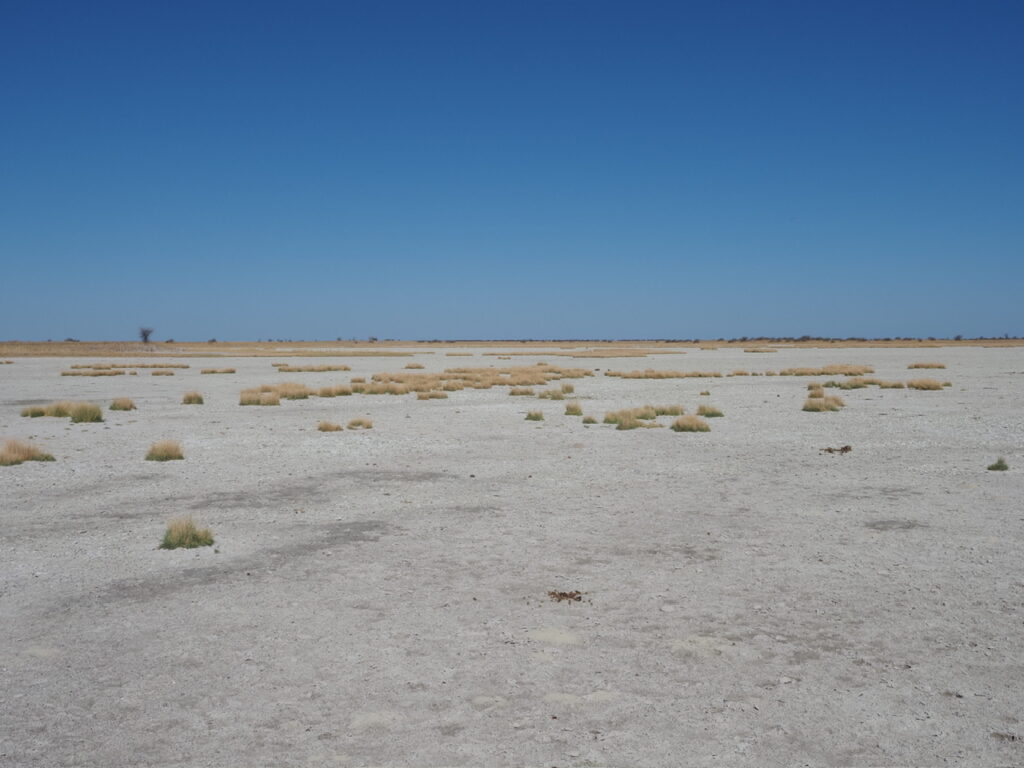

…and ostriches, warthogs, ground squirrels, elephants, steenbok, kudu, secretary birds, yellow-billed hornbills and more grace us with their presence…
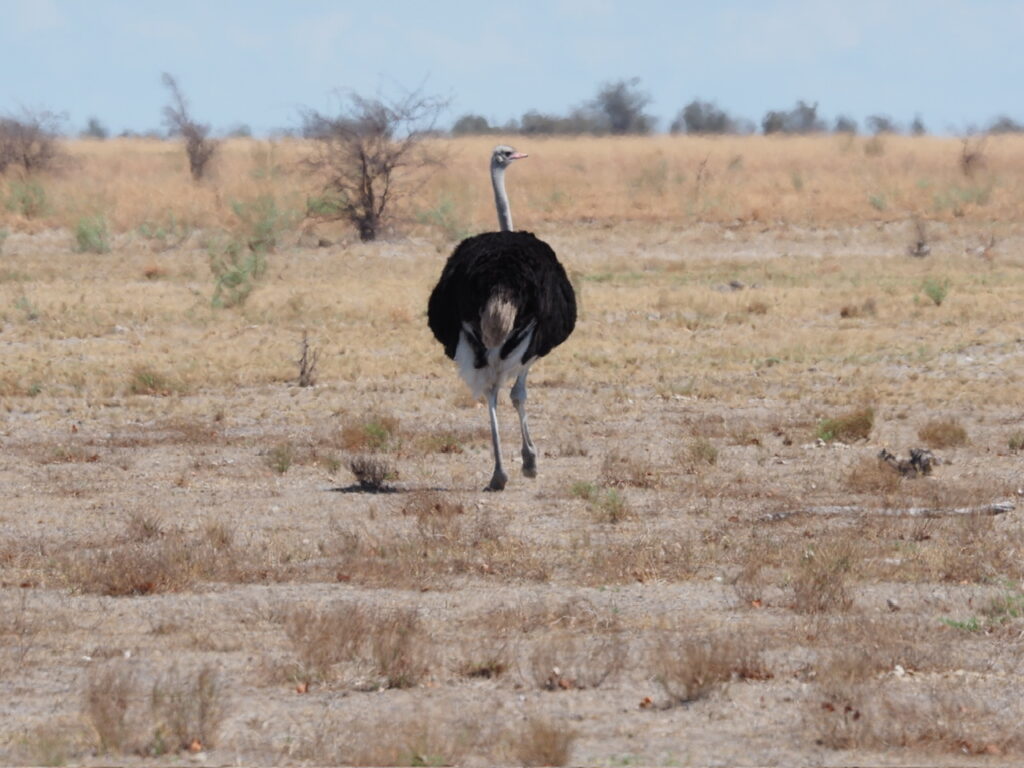
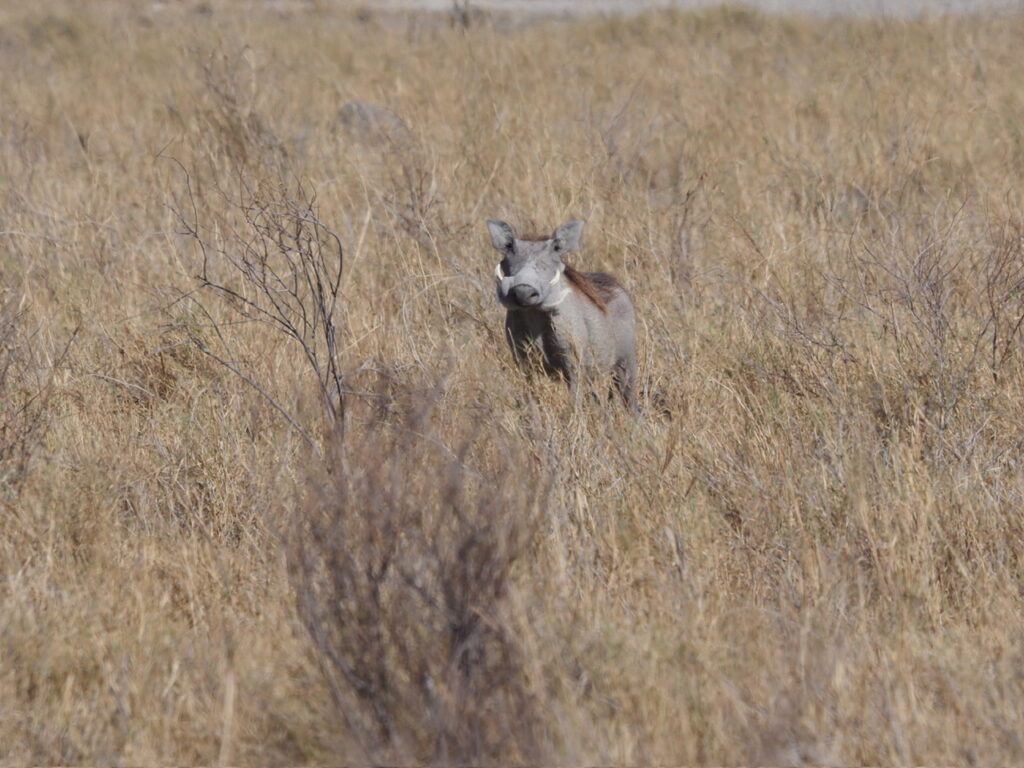






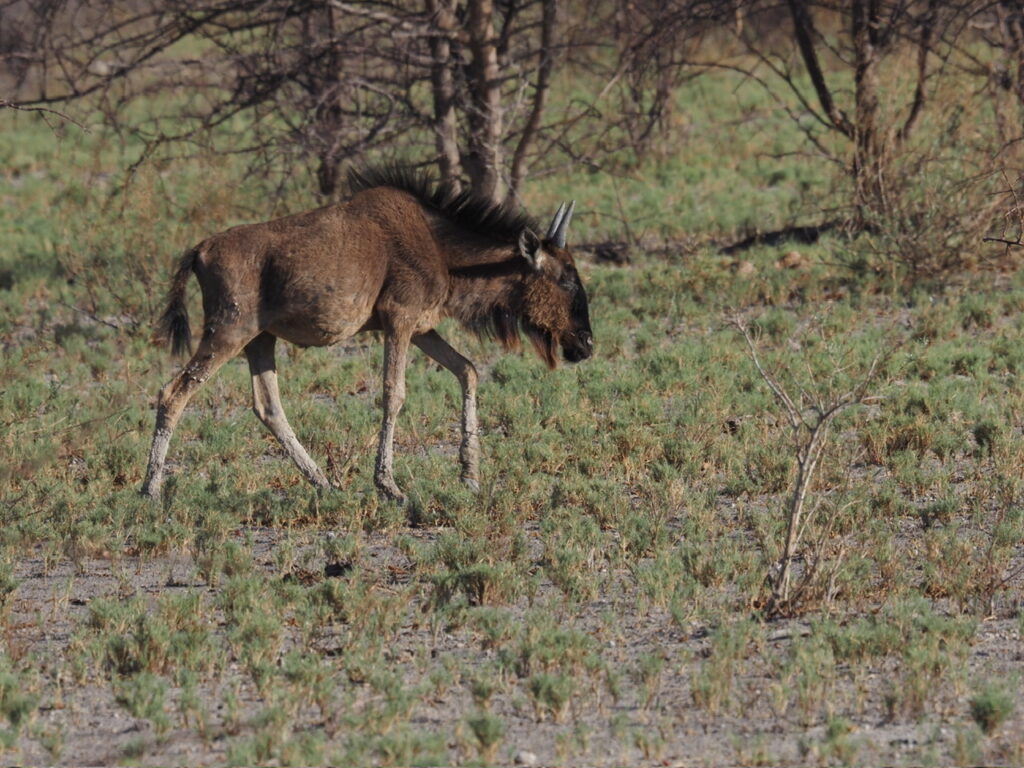

The afternoon drive sees us re-visiting the waterhole and watching the zebra and wildebeest interaction.


We continue on our way spotting a newly born zebra and mother…

…and up onto the pan where the herds are overnighting…
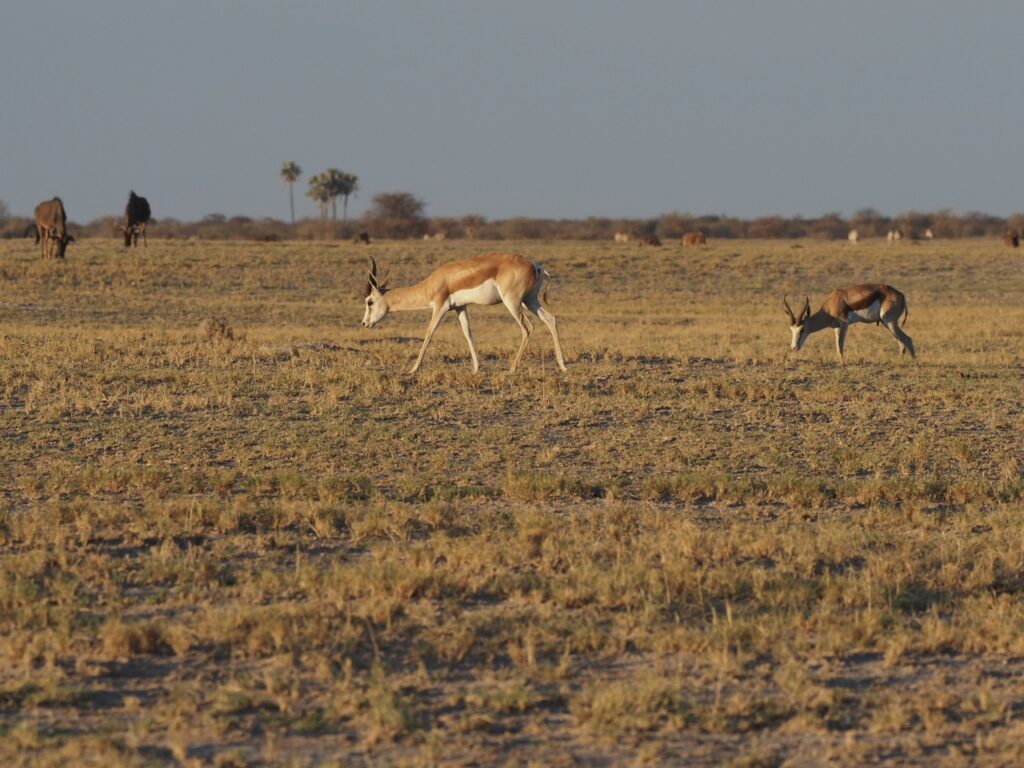

…the horizon extends in all directions and we have a 360 degree view of the curvature of the earth. Quite something and a slightly surreal experience. What a place to drink sundowners!

Spring hares (aka African kangaroos) abound on our drive back to camp.

Our final morning drive before our flight to our next camp provides more incredible encounters. Initially the morning is quiet, but there are lots of birds around as well a scrub hare.
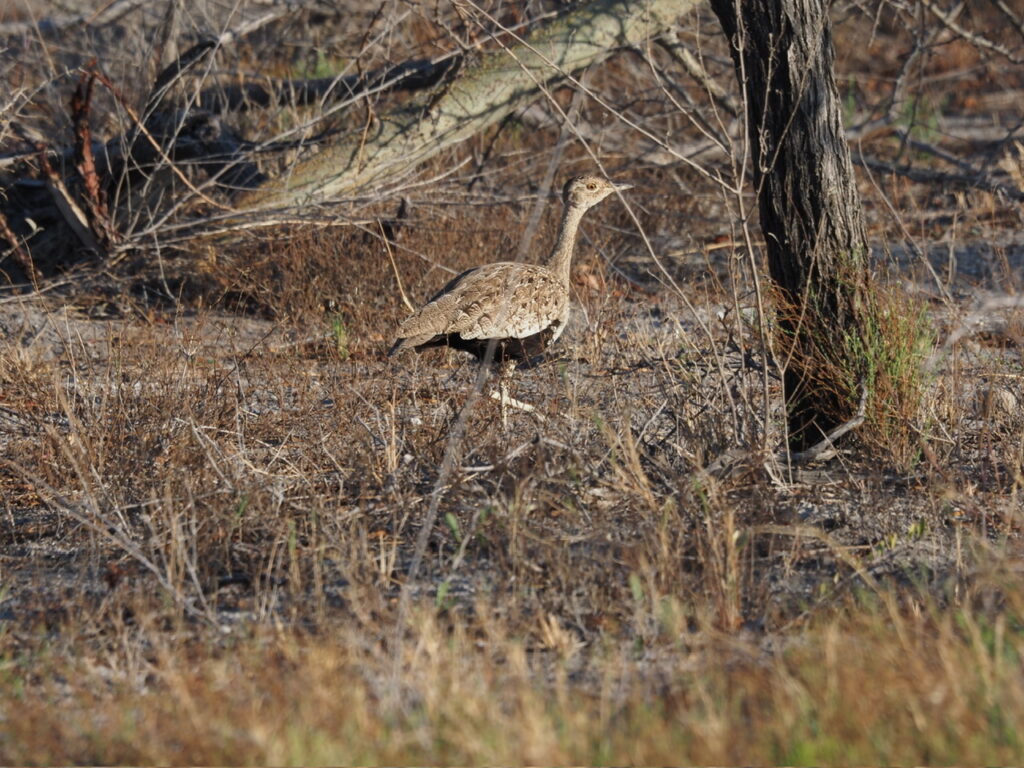





We stop for coffee at a small water hole. Zebra and wildebeest are joined by stray cattle which frequently get killed by lions. Sand grouse drink and a yellow kite threatens them. There is lots to watch while we stretch our legs.
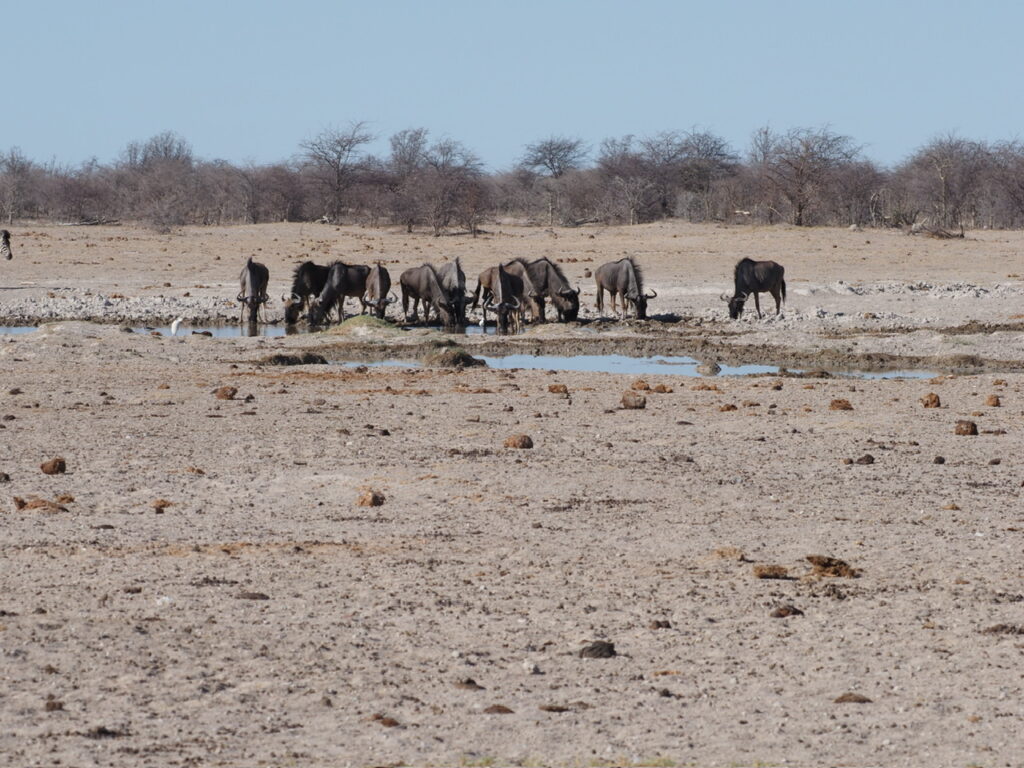




We were asked when we arrived whether we should like to go out horse-riding. I felt my riding skills were not good enough in case we met something fierce. Clearly my instincts were correct. We see vultures landing and find them, together with several jackals, feeding on a recent lion kill – a dead horse which still has its rope attached. Why would anyone want to ride a lion’s meal? No thank you!

